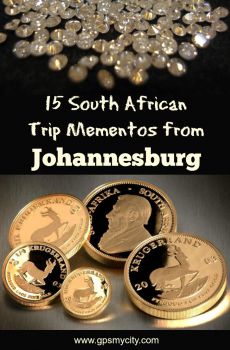
Museum Africa, Johannesburg
Museum Africa, previously known as the Africana Museum, stands as a significant historical institution located in Newtown, Johannesburg. The museum's inception dates back to 1933, marked by the acquisition of a substantial collection of Africana materials and books from collector and writer John Gaspard Gubbins by the Johannesburg Public Library. As the years progressed, starting in the mid-1930s, the museum expanded its focus to encompass all facets of African cultural history and material culture.
Over time, Museum Africa also established several branch museums, including the James Hall Museum of Transport in 1964, the Bensusan Photographic Museum and Library in 1969, The Museum of South African Rock Art in 1969, and the Bernberg Museum of Costume in 1973. In 1978, it assumed control of the Museum of Man and Science.
Following the momentous political changes in South Africa, namely the end of apartheid and the emergence of a representative democratic government in 1994, the museum underwent renovation and was rebranded as Museum Africa.
The museum houses a diverse array of collections, including African material culture from various regions of the continent, featuring noteworthy holdings of tokens, musical instruments, and head-rests.
Among its permanent exhibitions, "MyCulture" delves into the diverse cultural and ethnic groups of South Africa, tracing their origins and the transformations these groups have undergone over time. "Johannesburg Transformations" sheds light on the significant changes that the city has experienced throughout its history. Lastly, "Tried for Treason" is an exhibition that meticulously documents the Rivonia Trial, a historic event involving 156 defendants, including Nelson Mandela.
Tip:
Have a look at the amazing street art around the outside of the museum.
Over time, Museum Africa also established several branch museums, including the James Hall Museum of Transport in 1964, the Bensusan Photographic Museum and Library in 1969, The Museum of South African Rock Art in 1969, and the Bernberg Museum of Costume in 1973. In 1978, it assumed control of the Museum of Man and Science.
Following the momentous political changes in South Africa, namely the end of apartheid and the emergence of a representative democratic government in 1994, the museum underwent renovation and was rebranded as Museum Africa.
The museum houses a diverse array of collections, including African material culture from various regions of the continent, featuring noteworthy holdings of tokens, musical instruments, and head-rests.
Among its permanent exhibitions, "MyCulture" delves into the diverse cultural and ethnic groups of South Africa, tracing their origins and the transformations these groups have undergone over time. "Johannesburg Transformations" sheds light on the significant changes that the city has experienced throughout its history. Lastly, "Tried for Treason" is an exhibition that meticulously documents the Rivonia Trial, a historic event involving 156 defendants, including Nelson Mandela.
Tip:
Have a look at the amazing street art around the outside of the museum.
Want to visit this sight? Check out these Self-Guided Walking Tours in Johannesburg. Alternatively, you can download the mobile app "GPSmyCity: Walks in 1K+ Cities" from Apple App Store or Google Play Store. The app turns your mobile device to a personal tour guide and it works offline, so no data plan is needed when traveling abroad.
Museum Africa on Map






Sight Name: Museum Africa
Sight Location: Johannesburg, South Africa (See walking tours in Johannesburg)
Sight Type: Museum/Gallery
Sight Location: Johannesburg, South Africa (See walking tours in Johannesburg)
Sight Type: Museum/Gallery
Walking Tours in Johannesburg, South Africa
Create Your Own Walk in Johannesburg
Creating your own self-guided walk in Johannesburg is easy and fun. Choose the city attractions that you want to see and a walk route map will be created just for you. You can even set your hotel as the start point of the walk.
Historical Buildings Walking Tour
Since founded in 1886, following the discovery of gold on what used to be farmland, Johannesburg has evolved into an economic powerhouse of Africa. While most of the city's early buildings adopted architectural styles from its colonial parent, the British Empire, some of them also emulated the prowess of New York City. Let's take a closer look at some of these construction marvels.
... view more
Tour Duration: 1 Hour(s)
Travel Distance: 0.7 Km or 0.4 Miles
... view more
Tour Duration: 1 Hour(s)
Travel Distance: 0.7 Km or 0.4 Miles
Johannesburg Introduction Walking Tour
Johannesburg, or Joburg, or "City of Gold", as it is often informally called, is South Africa's largest city. The area's original inhabitants included hunter-gatherers from the San tribes and the Ndebele, a tribe associated with the Zulu. A gold rush in 1884 lead to Johannesburg's founding in 1886. Within a decade, the population had grown to 100,000 inhabitants.
Much... view more
Tour Duration: 1 Hour(s)
Travel Distance: 2.9 Km or 1.8 Miles
Much... view more
Tour Duration: 1 Hour(s)
Travel Distance: 2.9 Km or 1.8 Miles
Useful Travel Guides for Planning Your Trip
15 Uniquely South African Souvenirs to Bring Home from Johannesburg
One of the most fascinating cities in Africa, Johannesburg is a showroom for all things South African - a mixture of native and European trends, deeply rooted in local habits and traditions. To find your way around many of the delights Jo'burg has to offer and to pick up some as a remembrance...
South African Sweets and Pastries
A melting pot of the Dutch, British and African traditions, the culture of South Africa embraces flavorful cuisine in which traditional desserts play an important role. South Africans love it sweet – be it a veggie dish or a barbecue sauce on meat, let alone purpose-made pastries that they are...




